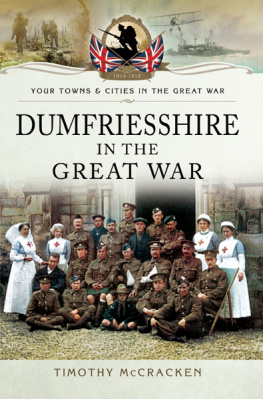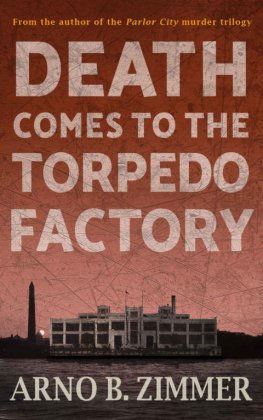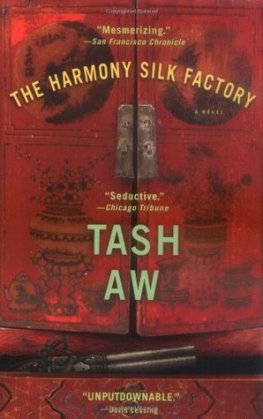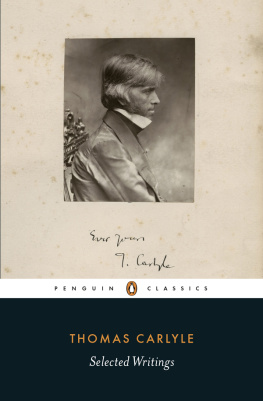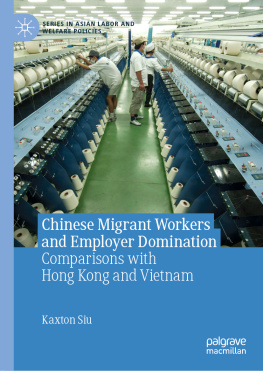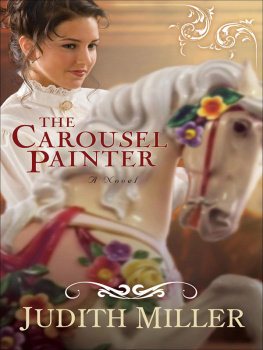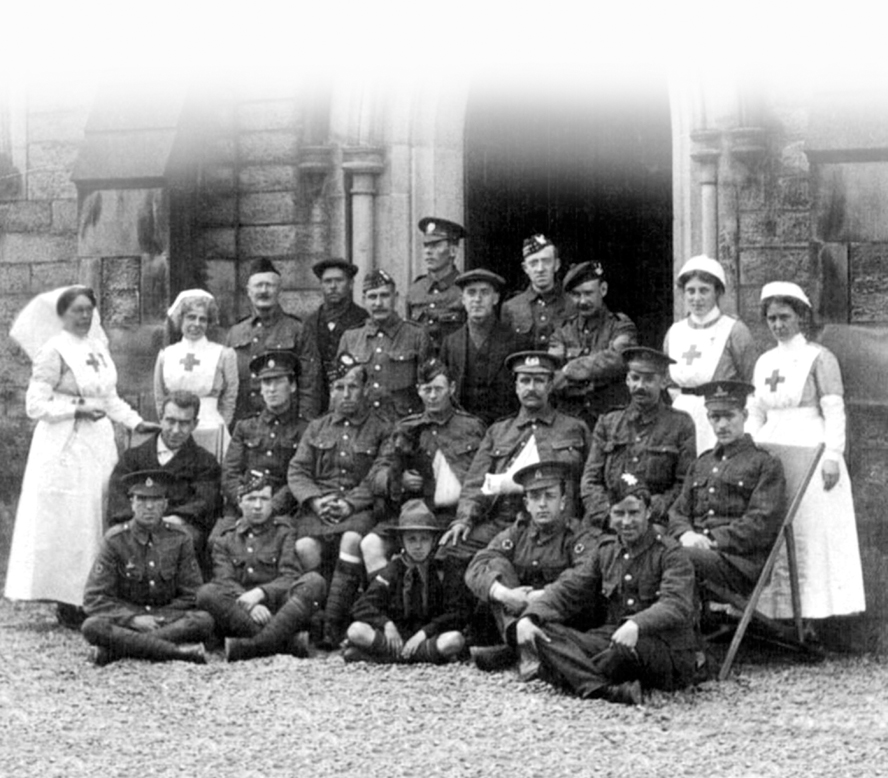
Members of the 34th Voluntary Aid Detachment (Dumfries) with patients, outside Langholm Red Cross Hospital. Two patients in Royal Army Medical Corps (RAMC) uniform can be identified sitting at front of the group as they have round Red Cross badges on their sleeves.
Courtesy of Ms Caroline Brisbane-Jones-Stamp
This book is dedicated to those whose lives were changed by the First World War
First published in Great Britain in 2015 by
PEN & SWORD MILITARY
an imprint of
Pen and Sword Books Ltd
47 Church Street
Barnsley
South Yorkshire S70 2AS
Copyright Timothy McCracken, 2015
ISBN: 9781473823075
EPUB ISBN: 9781473854413
PRC ISBN: 9781473854536
The right of Timothy McCracken to be identified as the author
of this work has been asserted by him in accordance with the
Copyright, Designs and Patents Act 1988.
A CIP record for this book is available from the British Library.
All rights reserved. No part of this book may be reproduced or transmitted
in any form or by any means, electronic or mechanical including
photocopying, recording or by any information storage and retrieval
system, without permission from the Publisher in writing.
Printed and bound in England
by CPI Group (UK) Ltd, Croydon, CR0 4YY
Typeset in Times New Roman
Pen & Sword Books Ltd incorporates the imprints of
Pen & Sword Archaeology, Atlas, Aviation, Battleground, Discovery,
Family History, History, Maritime, Military, Naval, Politics, Railways,
Select, Social History, Transport, True Crime, and Claymore Press,
Frontline Books, Leo Cooper, Praetorian Press, Remember When,
Seaforth Publishing and Wharncliffe.
For a complete list of Pen and Sword titles please contact
Pen and Sword Books Limited
47 Church Street, Barnsley, South Yorkshire, S70 2AS, England
E-mail:
Website: www.pen-and-sword.co.uk
Contents
Acknowledgements
Ms Janice Aitken for permission to include photographs
Mr Bryan Armstrong and Mr William Laidlaw, Dumfriesshire Newspaper Group, Annan, for access to the newspaper group archives and permission to include photographs
Ms Caroline Brisbane-Jones-Stamp for permission to include photographs
Sir John Buchanan-Jardine, Bt., for permission to include photographs
Mr David Calvert for permission to include extracts from the diary of John Corrie and permission to include photographs
Mr Glen Carr whose school history teaching provided an excellent foundation for further study
Mr Duncan Close for research advice and permission to include photographs
Professor Karl-Erik Frandsen whose teaching at the University of Copenhagen provided excellent guidance in developing research skills
Ms Barbara Janman for research advice and permission to include photographs
Mr Peter John for research advice
Mr Ian Martin, The Kings Own Scottish Borderers Museum, Berwick-upon-Tweed, for research advice and permission to include photographs
Ms Brenda Morrison, and the Langholm Archive Group, for permission to include photographs
Mr Derek Robertson for research advice and permission to include photographs
Dr Thomas Rohkrmer and Dr Alan Warburton, whose excellent seminars at Lancaster University provided detailed insight into the social impacts of the First World War
The staff of the Dumfries and Galloway Libraries, Information and Archive Service, Ewart Library, Dumfries, for research advice and permission to include photographs
The British Red Cross Museum and Archives, London, for research advice
Introduction
IN DUMFRIESSHIRE, as throughout the United Kingdom, and indeed in all the nations involved in the conflict, the First World War had a great impact.
There was no common personal experience of the conflict with an individual, perhaps amongst many events and feelings, experiencing the loss of family and friends, fear, a desire to support the war effort and grief following the end of the conflict. It is hoped the aspects explored in this study will help to illustrate some of the experiences, shaped by the First World War, of the population of Dumfriesshire.
Dumfriesshire is a rural border county situated in the south-west of Scotland, separated from England by the Solway Firth. Today the county forms part of Dumfries and Galloway which was created in 1975 with the unification of Dumfriesshire and Galloway, as a result of the Local Government (Scotland) Act 1973.
In 1911 Dumfriesshire had a population of 72,825. Three principal rivers run through the county; the Nith, Annan, and Esk run from north to south, their valleys providing road routes to central Scotland. By the early years of the twentieth century an extensive system of railways provided the main means of transport within the county and to outlying areas. Carlisle, just south of Dumfriesshire and the Scottish Border, was an important railway junction, with main lines running to Edinburgh, Glasgow and Stranraer.
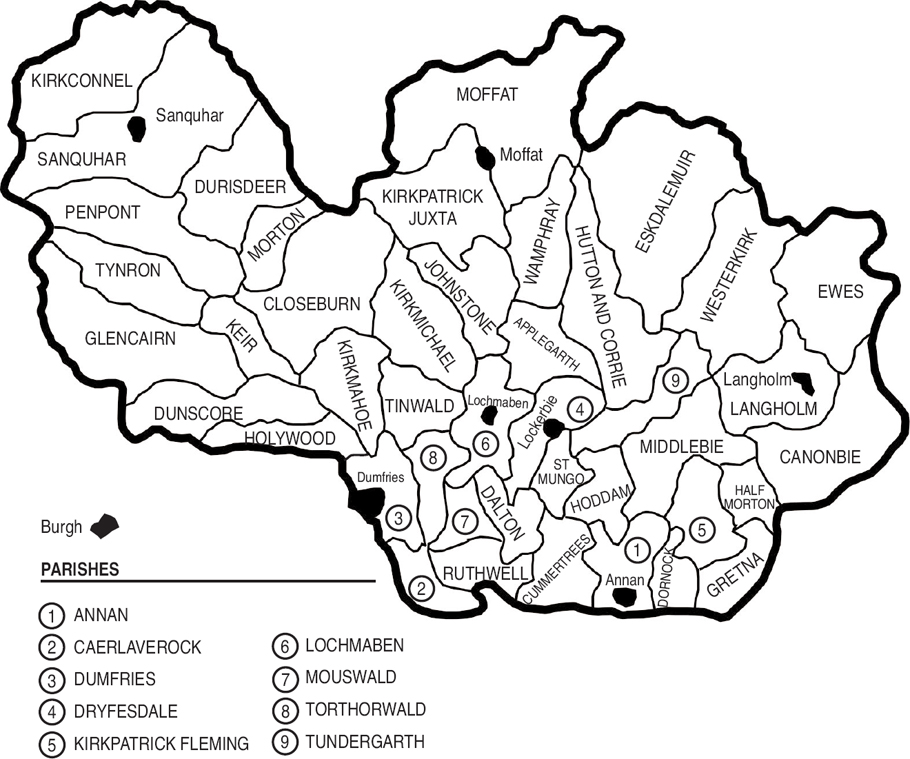
Sketch map of Dumfriesshire parish boundaries and burghs
The major centre of population was Dumfries; in 1911 the town had a population of 16,011. It was not until 1929 the burgh of Maxwelltown united with Dumfries to form one burgh.
As the county town, Dumfries had a great variety of trades, shops and services available. These included five aerated water manufacturers, eleven watch and clock makers, thirty-eight milliners and dressmakers, twenty-one tobacconists, twenty hotels, twenty-two tailors and clothiers and forty-three wine and spirit merchants. The towns progress since the 1890s ensured that by 1911 the streets were lit by electricity.
In 1911 the provincial towns in the region all had populations considerably smaller than Dumfries, their combined number of inhabitants not totalling that of Dumfries. Annan had a population of 4,219; Langholm, 2,930; Lochmaben, 1,056; Lockerbie 2,455; Moffat, 2,079; and Sanquhar 1,508. Less diverse than Dumfries, the towns still had a considerable variety of trades, one of the most specialised being that of wine and spirit merchant. There were five in Annan, four in Moffat, three in Lockerbie and two in Langholm. Sanquhar did not have a listed wine and spirit merchant, but did have the services of a spirit dealer.
Prior to the outbreak of the First World War the Dumfriesshire economy was largely dominated by agriculture, with coal mined around Canonbie, Kirkconnel and Sanquhar and lead mined in the Wanlockhead area. The rural areas of the region were extensively used for farming. The upland northern areas were suitable for sheep farming, the river valleys and coastal plains used for both dairy and arable farming. Agriculture formed the greatest industry in the county; the areas towns provided markets for the produce.
However the region also had some light manufacturing industries prior to the outbreak of war, with some factories later adapting to war work. The Arrol-Johnston motor company came to Dumfries in 1912. During the First World War production at the factory switched to aero engines, propellers, frames and machine gun parts, the number of employees increasing from 500 in 1914 to a peak of 1,500. During the winter of 1914, due to a combination of government orders and the enlistment of employees in the armed forces, Arrol-Johnston experienced a labour shortage. A considerable number of openings for those ineligible for military service were noted.
In the Dumfries textile mills production also changed during the conflict. At Rosefield and Troqueer mills production switched to khaki and French army blue cloth for the Allied armies, and at MacGeorges Mill manufacture changed to army gloves.
Next page
